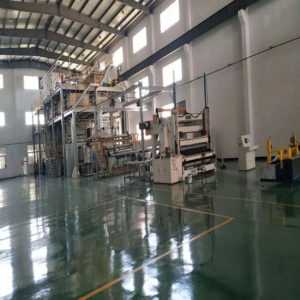The non-woven industry is a rapidly expanding industry that has gained significant importance in recent years. The industry has seen a surge in demand for non-woven fabrics due to their versatility, متانة, والفعالية من حيث التكلفة. Non-woven fabrics are used in a wide range of applications such as hygiene products, الإمدادات الطبية, filtration systems, and many more. Melt blown machine is the backbone of non-woven equipment and are responsible for the high-quality non-woven fabrics that we use in our daily lives.

Explaination Of The Meltblown Machine
Melt blown machines are used to produce meltblown fabrics, which are a type of non-woven fabric that is made using a process called melt blowing. The meltblown process involves the extrusion of a polymer through a small nozzle at high temperatures and pressures, which creates fine fibers that are then blown onto a conveyor belt. The fibers are then bonded together to create a non-woven fabric with unique properties such as high tensile strength, low weight, and excellent filtration capabilities.
The meltblown machine is a complex piece of equipment that requires precision engineering and advanced technology to produce high-quality fabrics. The machine consists of several components, including an extruder, a die, a spinneret, and a quenching system. The extruder is responsible for melting the polymer, which is then pushed through the die to create a uniform flow of molten polymer. The spinneret has small holes that are usedto extrude the molten polymer into fine fibers, which are then cooled and solidified by the quenching system.
The Quality Of The Meltblown Fabric Depends On Several Factors
The quality of the meltblown fabric depends on several factors. It includes the type of polymer used, the temperature and pressure of the extrusion process, and the speed and distance of the fiber spinning. The meltblown machine needs to be carefully calibrated to ensure that these factors are optimized to produce high-quality fabrics.
Melt-Blown Machines With Various Sizes
Melt blown machines are available in various sizes and configurations, depending on the application and production capacity. Small-scale machines are suitable for research and development purposes and can produce a few kilograms of fabric per hour. Large-scale machines, on the other hand, can produce several tons of fabric per day and are used in commercial production facilities.
The demand for melt blown machines has increased significantly in recent years due to the growing demand for non-woven fabrics. The COVID-19 pandemic has further fueled the demand for non-woven fabrics, particularly for the production of face masks, medical gowns, and other protective equipment. As a result, several companies have invested in melt blown machines to meet the growing demand for non-woven fabrics.
